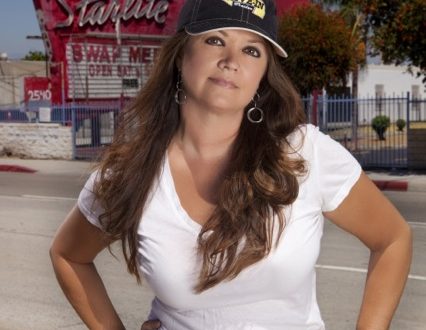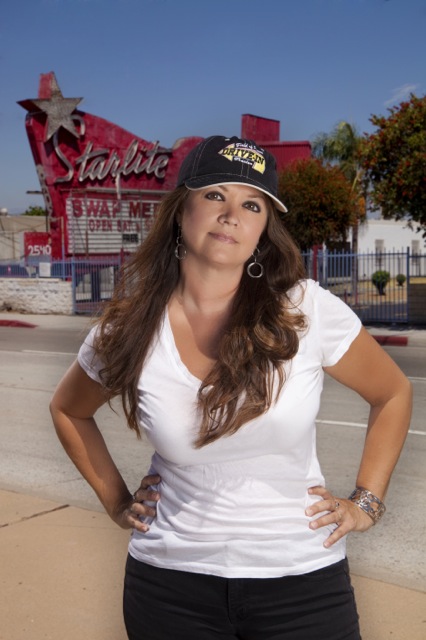
April Wright is a film director whose credits include the documentaries Going Attractions: The Definitive Story of the American Drive-In Movie (2013), Going Attractions: The Definitive Story of the Movie Palace (2019), and Stuntwomen: The Untold Hollywood Story (2020), all of which can be viewed JustWatch.com. Like all of us cinephiles, Ms. Wright was not just a fan of movies but also a lover of the experience of going to see a movie, especially at the drive-in. Ms. Wright and I are similar in age and her enthusiasm for the drive-in dates back to her childhood, a familial outing which became a much anticipated and frequent event during the summer months. I cannot make that claim, unfortunately, as I have attended the drive-in only a handful of times in my life.
Ms. Wright’s latest film, Back to the Drive-In (2023), looks at a dozen remaining drive-ins across the United States and the owners who are, quite honestly, struggling to keep them going. It’s a poignant look at an American pastime that has slowly become an endangered species.
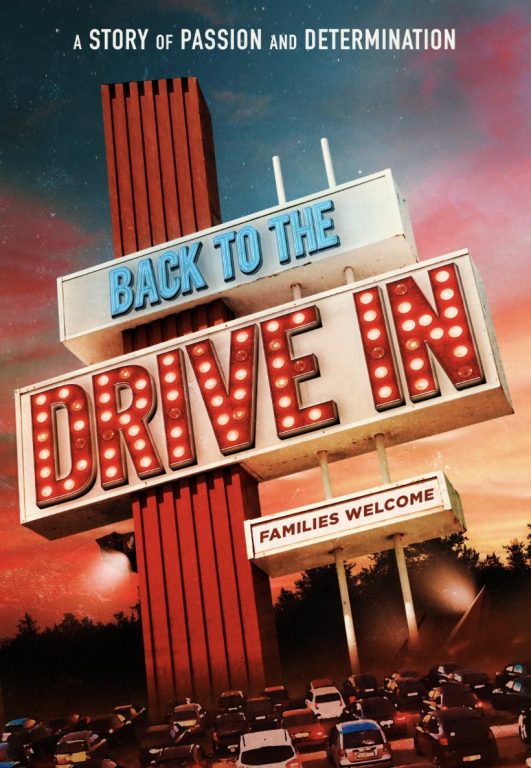
Jonathan Stryker: I loved your film. I’ve been a movie fan all my life and I love drive-ins, as well as big and beautiful movie theaters. Clearly you share my enthusiasm.
April Wright: Yes, absolutely. I had a movie family in a way. My dad had an 8mm camera and reel-to-reel editing equipment for that in the basement. I did understand a little bit of the nuts and bolts of filmmaking even when I was a kid. We watched lots of movies. There was a neighborhood movie palace down the street from my house in Chicago that my brother and sister ended up working at. I was able to see a lot of movies. I’ve been interested in movie palaces, just because they were so big and ornate. Now you watch movies at home or on your smartphone and that showmanship is changing and I just don’t really understand why. I like making movies to remind people about what a cool experience it can be seeing a movie as an event and an experience.
JS: Do you remember the very first movie you saw in either a drive-in or in a movie theater?
AW: I really don’t because it was just so commonplace that we saw a lot of movies, so I don’t have any “first-experience” memories. I kind of remember seeing Song of the South as a kid and I remember Willy Wonka and the Chocolate Factory. I’m sure I saw some of the Herbie The Love Bug films. Escape to Witch Mountain, I remember seeing that one at a drive-in. I love horror films and I saw them, too. One thing I remember vividly is when Carrie was on television, and my mom telling me I couldn’t come in the room. Of course, I really wanted to, and I snuck downstairs. I looked in right at the end where the hand comes out. It scared me, but it made me really curious. When I was older and I saw the whole movie, it’s one of my favorite films of all time. It intrigued me in a way, just planted that seed since she made it even more forbidden, like, “You can’t watch this!” (laughs)
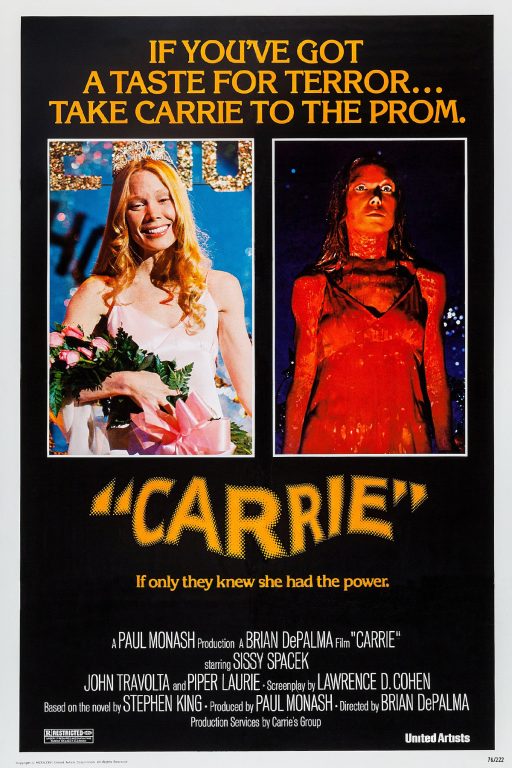
JS: You’ve made a documentary about movie palaces.
AW: Yes! One of the interviews in that movie is shot at the Loew’s Jersey City. We shot that in 2017. That’s a gorgeous theater. I love it. When that reopens, it’s going to be really great. That theater’s interesting because at one point in time, they had split it into three theaters during the multiplex era.
JS: What?! Are you serious? I had no idea!
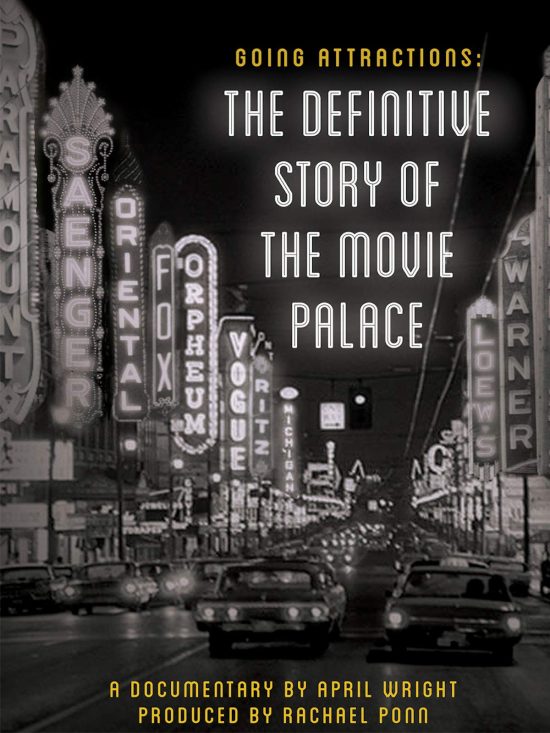
AW: Yes, so on the main floor, they split it right down the middle. You had half of the main screen on the left and the other half on the right. They covered the balcony so that they had a third screen up there and they took all that out, which is incredible that they were able to remove all that partitioning. Right down the street is The Stanley Theater which is now home to the Jehovah’s Witnesses. We got to go in there during the Theater Historical Society tours that we were on. That one is gorgeous, too. It’s an atmospheric theater and they used to have a blue sky and twinkling lights on the ceiling in most of them. Then it would look like a little town around you as if you were outside. It’s impeccably maintained, it’s gorgeous, but they painted their ceiling white, so it looks like you’re up in the heavens or up in the clouds when you’re in there.

Loews Jersey in Jersey City, NJ
JS: I’m jealous because in my area, I had a handful of movie theaters that I went to over the years, and now they’re all gone! One of them was the Plainfield Edison Drive-In. They had a double feature of Black Christmas and Psycho, The Velvet Vampire, Lemora: A Child’s Tale of the Supernatural, etc. It opened in 1957 and closed in 1984, the year before I obtained my driver’s license!
AW: I don’t know if you know this, but the very first drive-in ever was in New Jersey.
JS: Yes, that was Camden. The founder was Richard Hollingshead.
AW: Yes! His son is in my first documentary talking about how his dad invented it. It opened in 1933, so this year is the 90th anniversary of the drive-in, which is pretty cool.
JS: Hard to believe. In fact, what I liked about your new film, Back to the Drive-In, is that you have the Delsea Drive-In in Vineland, NJ, the only remaining drive-in in the state.
AW: Yes. I went down there. We shot more, but they said, “Oh, we don’t want to be in it that much.” Some people like being on camera and don’t. A lot of the drive-in owners are part of the United Drive-In Theater Owners Association, there’s a group. They have an annual conference in Florida. I went to it in February of 2020, which is right before COVID. I knew I wanted to do a follow-up (to my previous film about drive-ins), and at that point in time, I thought I wanted to just go really in depth with perhaps three families. I said to them there, “Does anybody want to be part of this film?” There were some other drive-ins that had wanted to be part of my next film that weren’t in my first one, and so I had a few potential ones. Then a month later, COVID hit, and even though drive-ins were open, I still felt like states were changing the rules and everything was still weird for a little while. I waited, but then the more that COVID was going on and then drive-ins started getting all this attention, I thought that this is a layer to my story that I never could have anticipated. It made me expand that instead of just showing a few families in depth and what they do. I wanted to show not only that, but what was COVID doing to it? It made me want to have a bigger cross-section. I needed to see what was going on and go to some really old and some fairly new drive-ins. I wanted to go to some big ones with seven screens, and I wanted to go to the single screens out in different states. I tried to just pick every type of factor to represent. The weird thing was, as soon as I got on the road and went to a few of them, I realized they were all telling me the same story. They were all struggling. Everybody was just trying to get through this period. They were small businesses, family-owned, and they were just trying so hard to keep them going because they really care about what it provides to their community. That’s how it came about. I was going to do it anyway, but then the way I decided to do it evolved because of COVID.
JS: Sure, of course. I can totally see that. What I find interesting is, in the movie, they say, “We ask you to keep your mask on while you’re in the car.” We forget how bad it really was back then during the height of COVID.
AW: Yes. I think that might have been a California drive-in, too, because California was more rigid than other places. California was definitely in a program wherein if the numbers were high the rules were stricter. If the numbers went down, then it got released. That might have been at a moment when the numbers were high. I know because although I’m from Chicago, I live in Los Angeles.
JS: I haven’t been to LA since 2008. I have gone to more drive-ins as an adult while out on business than I ever did when I was a child. It just kills me to see this type of thing dying out. I look at the theaters that used to be around here on CinemaTreasures.org and there is no evidence that these places ever existed.
AW: I know. When you see a horror movie at a drive-in and you can look over to your right or left, and there’s a forest right next to you, that’s an extra layer of film! That’s like 4-D!
JS: Who are some of your favorite actors, actresses, directors?
AW: One of my favorites is Brian De Palma.
JS: Oh, I love him. I just saw the new Dressed to Kill 4K Blu-ray and it’s beautiful.
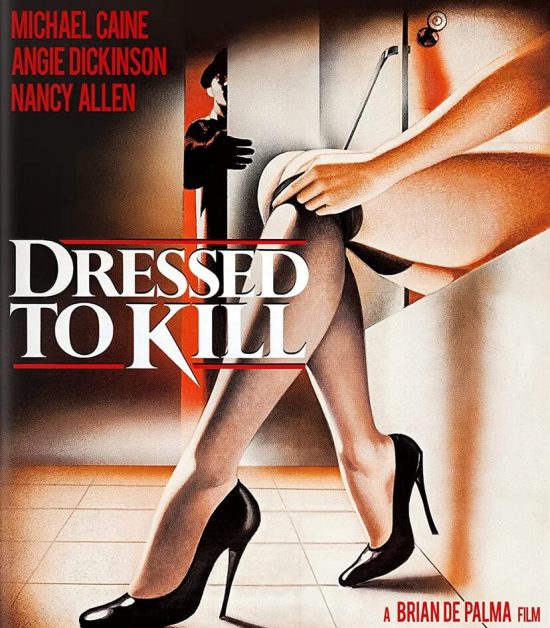
AW: I really like pretty much all his films, just the way he shoots them. I like the split-screen stuff. I think they all hold up. He had great actors and all of them and just, yes, I think he’s a great filmmaker. Like even the Mission Impossible series, I still think the first one is the best one that he directed.
JS: Do you like William Friedkin?
AW: I do. Actually, we’ve met and chatted before because he’s also a fellow Chicagoan. I love The French Connection. That’s probably his best movie, my absolute favorite. I went to a screening of that at the Academy where he was there doing Q&A and just some of the stuff that he did because he came out of documentaries first. For him to do moving shots the way he did and just the grittiness of it, I mean that was something on the newer side when he shot something that way. Yes, I really love that. I love all John Carpenter’s stuff, for sure. Richard Linklater. I love (Steven) Soderbergh’s work because he’s just made such a wide array of movies, big movies but also small and experimental, some that he shot on videos cameras. He tries different things. I really like them as filmmakers as well. Amy Heckerling has such a great body of work and Penelope Spheeris. She started in documentaries. I actually just went to see her doc a few days ago, the first Decline of Western Civilization, about punk and she was there for Q&A. I love Nicholas Cage, too.
JS: Marathon Man was my first Dustin Hoffman film.
AW: That’s a great one. Thrillers and horror are probably my number one. Of course, I do like documentaries as well, especially if they’re about subjects that you can learn something about. Also, I love John Landis. I’m from Chicago, and he shot some things there like The Blues Brothers. The Shining is one of my favorites of all time. When I was a kid, for some reason I was obsessed with the newspaper ad for The Shining, the one with Jack’s face. And I guess the font, too. I just wanted to see it bad, and of course I couldn’t. I saw it as an adult, probably in college, and it totally delivered. I love the way it’s shot. The big wheel, the twins scene, the elevator of blood, Jack’s performance, the snow maze. As many times as I’ve seen it, I’m still not sure if Jack was the caretaker.
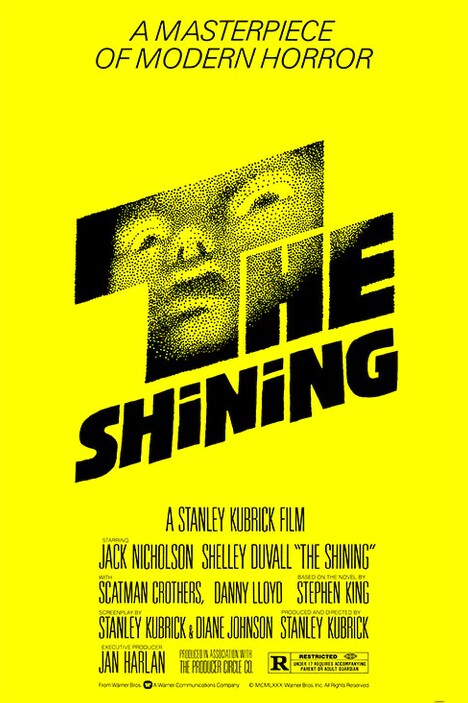
JS: How much footage did you shoot for Back to the Drive-In?
AW: Quite a bit. I had a crew to help me in Los Angeles when I was here, but the rest I actually did by myself. I had my primary camera, I had my drone, and then I had a GoPro, which I did time-lapses from empty daytime to evening. Between those three, it gave me enough to cut together, but I usually got to each drive-in in the afternoons, you would start maybe at three in the afternoon, capturing all their preparation, and then stay until late, usually two in the morning. It was basically almost twelve hours of footage for each one, because I would just get there and be shooting non-stop. Then the logical way to put it together, I thought it might be by subject, but once I looked at it, I realized, no, it’s got to be chronological. Just one big arc of the afternoon, the prep, and then opening the doors, and then the snack bar, and then getting the movie on screen, and then the breather once all that’s done became the way to tell it.
JS: I miss the aura and aroma of the theaters I went to as a child.
AW: Yes, it’s true. Movie theater smell. When I go to old theaters, too, a lot of times you walk into them and your reaction is, “Oh, there’s a good old movie theater smell.” Also in the projection rooms, if they’re where they have all that old equipment, that’s a certain smell because the film and the oil and all that had a smell, too. That’s almost gone now because they had to convert them to clean rooms for the digital projection. You must have a climate-controlled, very fancy environment for those. A lot of the drive-ins still have both projectors.
JS: Do you have an all-time favorite movie?
AW: Rocky.
JS: Did you see it in the movies when it first came out?
AW: I did. Even though I was a little kid, my mom saw it and she wanted to take us to see Rocky. That’s probably part of it. Also, I realized after I’ve been a filmmaker for a little while, some of the things I like or I’m drawn to – and Carrie falls into this, for sure – is that I really like underdogs and people who shouldn’t win but somehow do. That’s a theme in the films that I like. For Rocky, obviously, that is one of the best underdog stories. It’s not even the message of winning. It’s just going the distance, of course. The story of making it is an underdog story, too. The fact that Stallone can be a semi-nobody struggling actor and come up with this and write it and create such an iconic character that lives on is inspiring as well. I love that movie. It is my all-time favorite. If you want to talk horror, my all-time favorite is Carrie.
JS: I was sorry to see your film end because I just wanted to see so many other people talking. I’m sure you’ve probably seen The Last Blockbuster, the film about, literally, the last Blockbuster Video, which is in Bend, Oregon. In some ways, your movie reminds me of that film because I say, yes, there are no more video stores to go to. I want to thank you so much for taking the time to speak with me.
AW: Thank you very much. I’m glad you liked the movie!
Back to the Drive-In can now be seen streaming on Apple TV, Amazon Prime, Google Play, and YouTube.
